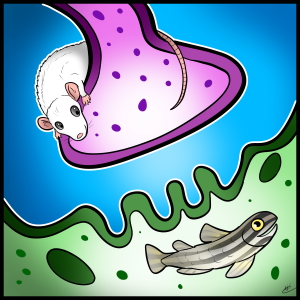Therapy development
Genetic therapies
Gene therapy and genetic therapies are treatments that target the underlying genetic cause of a disease. Various methods are in development in academic and commercial centres worldwide involving intervention at a molecular level to modify or replace the defective gene and restore its function. Most of these are at an early stage in preclinical development, but some have progressed to the clinic. Antisense oligonucleotides have recently been approved for the treatment of SMA and amyloid neuropathies. Gene replacement using viral vectors is in clinical development for several neuromuscular diseases including DMD, SMA and myotubular myopathy.
Previous research focused on gene therapy using viral vectors in animal models of DMD such as the mdx mouse and the DMD pig. We have developed small dystrophin genes to fit into AAV vectors and tested their functionality. Currently we are testing AAV vectors in mouse models of congenital myasthenic syndromes (CMS).
Repurposed compounds
This strategy involves taking drugs already licensed for human use and repurposing them to treat other medical conditions. Because these compounds have already been extensively tested in humans, a lot more is known about their safety and their mechanism of action than is the case for novel compounds, and so this approach has the potential to be more cost- and time-effective than developing entirely new drugs. However, since these drugs have not been used in our diseases of interest, it is still essential to test them thoroughly as it is important to understand how the compound will influence the impaired pathway.
The initial steps of this process require large-scale screening of compound libraries – often with cell models – to identify which drugs impact the pathways we are interested in. Once we have identified a list of potential compounds, we can test these in our animal and human models of disease in order to evaluate which would be the most effective.
Novel compounds
We work with both industry and academic partners to test and develop new compounds we think may impact the relevant pathways and thus lead to new drugs for patients. The initial stages of this research involve investigating the effects of these compounds on cellular models of the disease to ascertain which disease relevant pathways they impact and to what extent. We then take the most promising compounds and test them in our animals models, which include zebrafish and mice. These experiments can also involve studies to determine toxicity, dosing regimes, and drug concentrations.
Our current research in this area involves working with Neurotune and Argenx to investigate the effects of their compounds in animal models of congenital myasthenic syndromes. In addition, we are working with Dr Mark Gray, an organic chemist based at the University of Sunderland in the UK, to synthesize and test de novo compounds for the treatment of congenital myasthenic syndromes.

